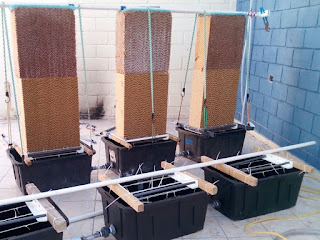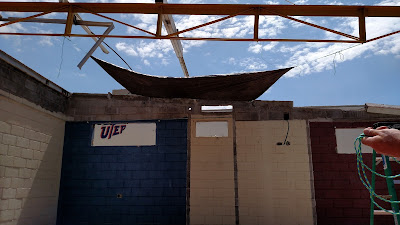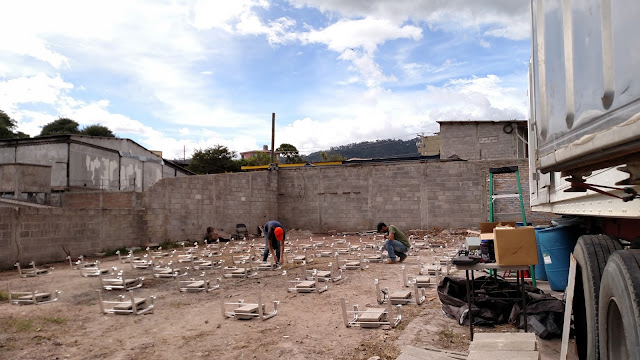Today we finally got to get to our site and get into the container. There was good news and bad news...which should I write about first?
Let's start with some good news. And, some pictures of the pilot site! Most of the equipment survived the journey from El Paso. We loaded many items that were secured to the floor of the container and desalination frame. All of the desalination equipment arrived without damage (YAY!). Here are a few pictures of the site. My colleague, Clara Borrego, and my husband, Ian, are in some of the pictures as well.
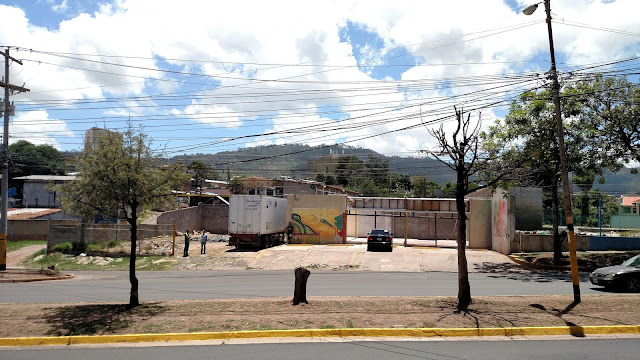 |
Pilot site and UTEP equipment.
It's hard to tell, but the area to the left of the trailer is quite large. This is where the solar PV panels will be located. |

We had a little fun opening the container today. A modified bolt and nut were used to secure the rear doors during shipment/storage. We needed to open the doors to get light and to let the system air out (more on this later...) and so we had to get creative. And use some tools in a non standard way. In addition to being smart, Clara is fearless and is the stronger one between the two of us. While I and my husband were moving things around inside the container, she broke the bolt off. What a champ! Here she is with the pieces left after her skills and strength.
After working at the site, we got to eat some food and then go get some needed supplies for our apartment (thank you,
UPi!). It is funny how you think you have planned for everything but can still forget to bring things. We got to experience Wal-Mart and driving through Tegucigalpa during Friday early evening rush hour. It was crazy! We have a local driver from UPi that is very calm and professional. I am grateful for that - I'm not used to driving in a big city, much less navigate one with steep hills!
Now, for the bad news...When we opened the container, it was obvious that one of the stacks of PV panels had tipped over sometime during shipment. We thought that we had secured everything very well, but apparently, we missed something. Thankfully, we only lost three out of 42 panels. This will require a minor adjustment to our wiring and is not expected to cause any operational problems. And another bad piece. Our container was damaged at some point during shipment. This means that we will need to repair it prior to shipping it back to El Paso. Here are some pictures, in case you're curious.
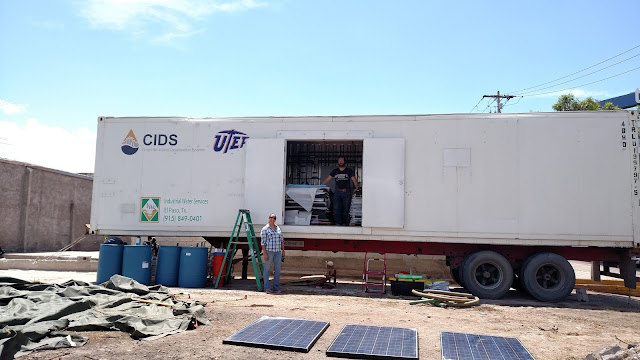 |
| Our container, partially unloaded. (broken panels in the foreground) |
 |
| One of the broken panels (insert sad face here) |
We got to see a fair amount of the city today. There is some interesting street art, churches, and buildings. I will keep collecting these and will do a separate post later.
Tomorrow we may start building the solar array and installing wiring. After we check out a local coffee place!
















